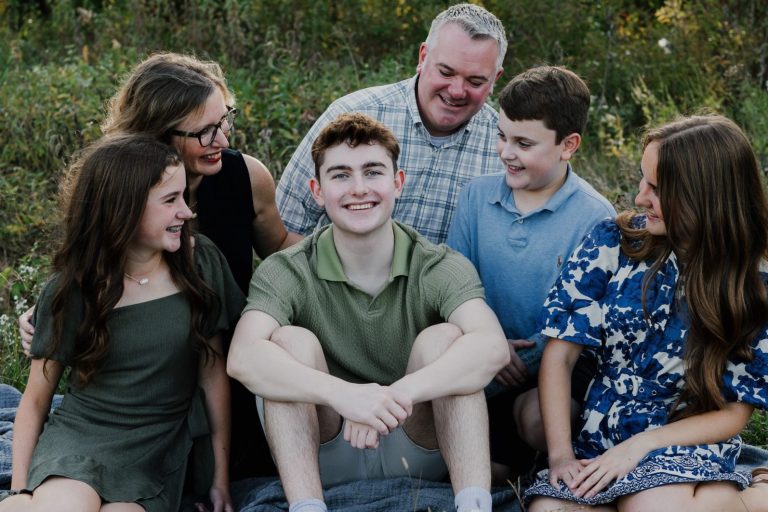If someone you know has childhood cancer, you may have a lot of questions. You may be following social media updates about them and trying to keep up with the new words and medical jargon. We created this crash course in the language of childhood cancer so you can be up to speed and understand what’s going on when reading updates.
Here is your guide to the terms we often hear surrounding childhood cancer – what they mean, what they apply to and where else you can find information on these topics.
Bone marrow transplant
A bone marrow transplant (BMT) is a type of cancer treatment a child can receive after chemotherapy to replace disease-forming bone marrow cells with healthy cells. The healthy cells, given through an IV, start to grown and make healthy red and while blood cells and platelets. This often-risky procedure often leaves children with an immune system that may never be at 100%. Read what CCRF is doing to create treatments that are better and safer than BMT.
Chemotherapy
A common treatment for many types of childhood cancer, chemotherapy works by destroying fast-growing cancer cells. But chemo drugs often can’t tell the difference between cancer cells and healthy cells, causing side effects like hair loss, fatigue and nausea, weight loss or gain and a weakened immune system. Watch this video to learn more about what chemo does in a child’s body.
Late effects
Because of the harsh nature of many childhood cancer treatments, many childhood cancer survivors struggle with late effects of cancer treatment, such as organ damage, infertility, immune system damage and loss of vision or hearing. Many of these late effects last years or the rest of a survivor’s life and require treatment long after the cancer is gone. Read Anna's story about navigating late effects of her treatment.
Metastasized/metastatic
Metastatic cancer is cancer that has been found in multiple parts of the body. When a cancer has metastasized, it means it has spread from the original site to another part of the body. Many childhood cancers have spread to another part of a body before they have been discovered and diagnosed.
No Evidence of Disease (NED)
A child’s cancer has been treated and doctors can’t detect any evidence of cancer cells after imaging and other tests, the child is declared “no evidence of disease.” This doesn’t mean the child’s cancer is cured – it just means that the best tests we have to detect cancer cells in the body cannot detect any cells. A child is typically not considered “cured” until they have been NED for 5 years.
Radiation therapy
Radiation therapy uses beams of radiation, either x-rays or protons, to kill cancer cells by damaging the DNA inside them. Radiation therapy is often used alongside chemotherapy or surgery to treat childhood cancer. The radiation targets the cancer but may damage nearby healthy tissue.
Relapse
When a child has been declared no evidence of disease and the cancer later comes back, this is considered a relapse. This usually means that a few of the original cancer cells survived the initial treatment. Most cancers have the highest chance of relapse a few months after treatment stops, but some can relapse even years later. Read Logan’s story about persevering through a neuroblastoma relapse.
Remission
When a child is in remission, it means their cancer is under control. Partial remission means the cancer is responding well to treatment, and complete remission means the cancer is no longer detectable by a doctor’s tests.
Scanxiety
Scanxiety is a term for the anxiety many cancer families feel leading up to their scans, which reveal if a child’s cancer is growing, shrinking or staying the same. Read tips from real parents about how they deal with scanxiety.
Secondary cancers
Many of today’s treatment for childhood cancers can put survivors at risk of secondary cancers, or cancers that may have been caused by their previous cancer treatment. CCRF funds research for treatments that aims to lessen the risk of secondary cancers.
Survival rate
When you hear “survival rate,” that usually refers to the five-year survival rate, a measurement of the percentage of children with a specific type of cancer who live for five years after their diagnosis. Our funding goes to research aimed not only at improving survival rates, but ensuring that all children diagnosed with cancer live full, healthy lives.
Kids Deserve Better, Safer Treatments
We believe kids fighting cancer deserve treatments that both eradicate their cancer and allow them to live full, healthy lives. With only 4% of federal cancer funding dedicated to childhood cancer, your support is crucial to finding safer, more effective therapies for kids battling cancer.




